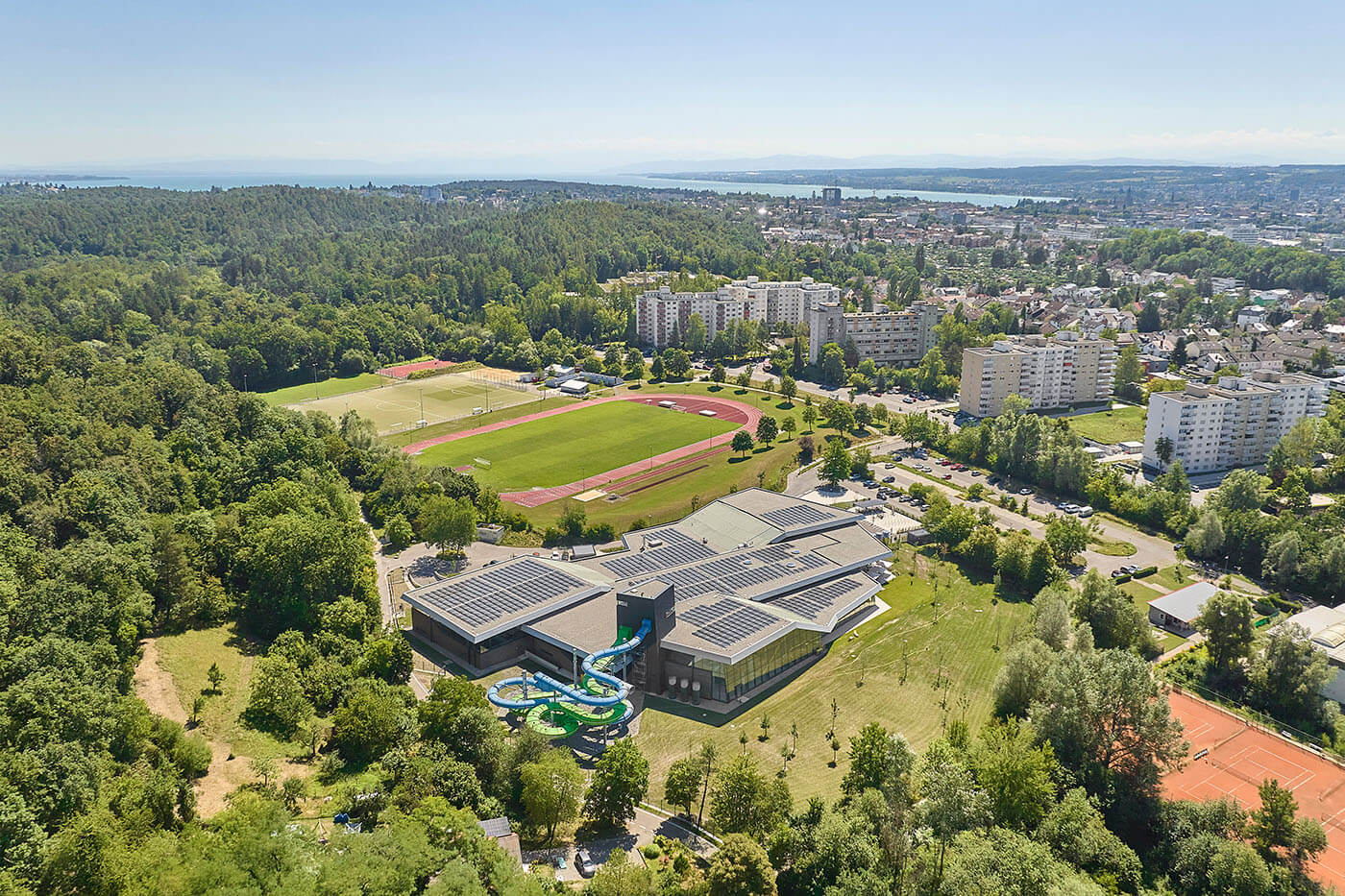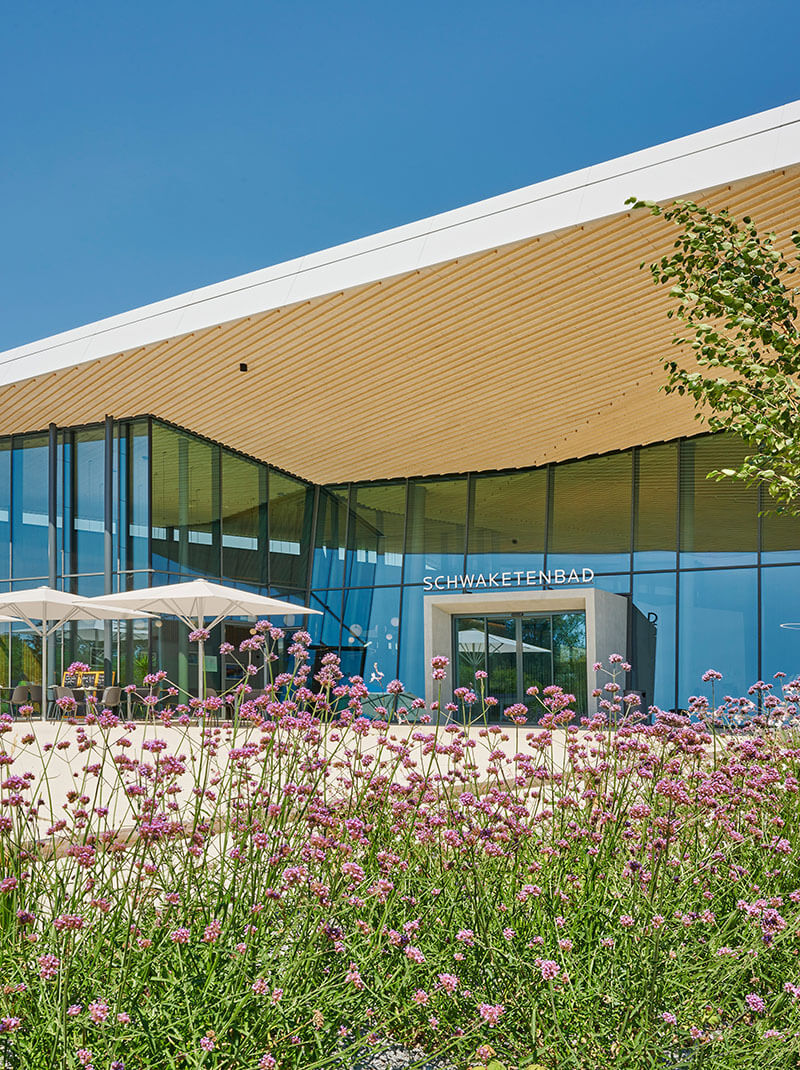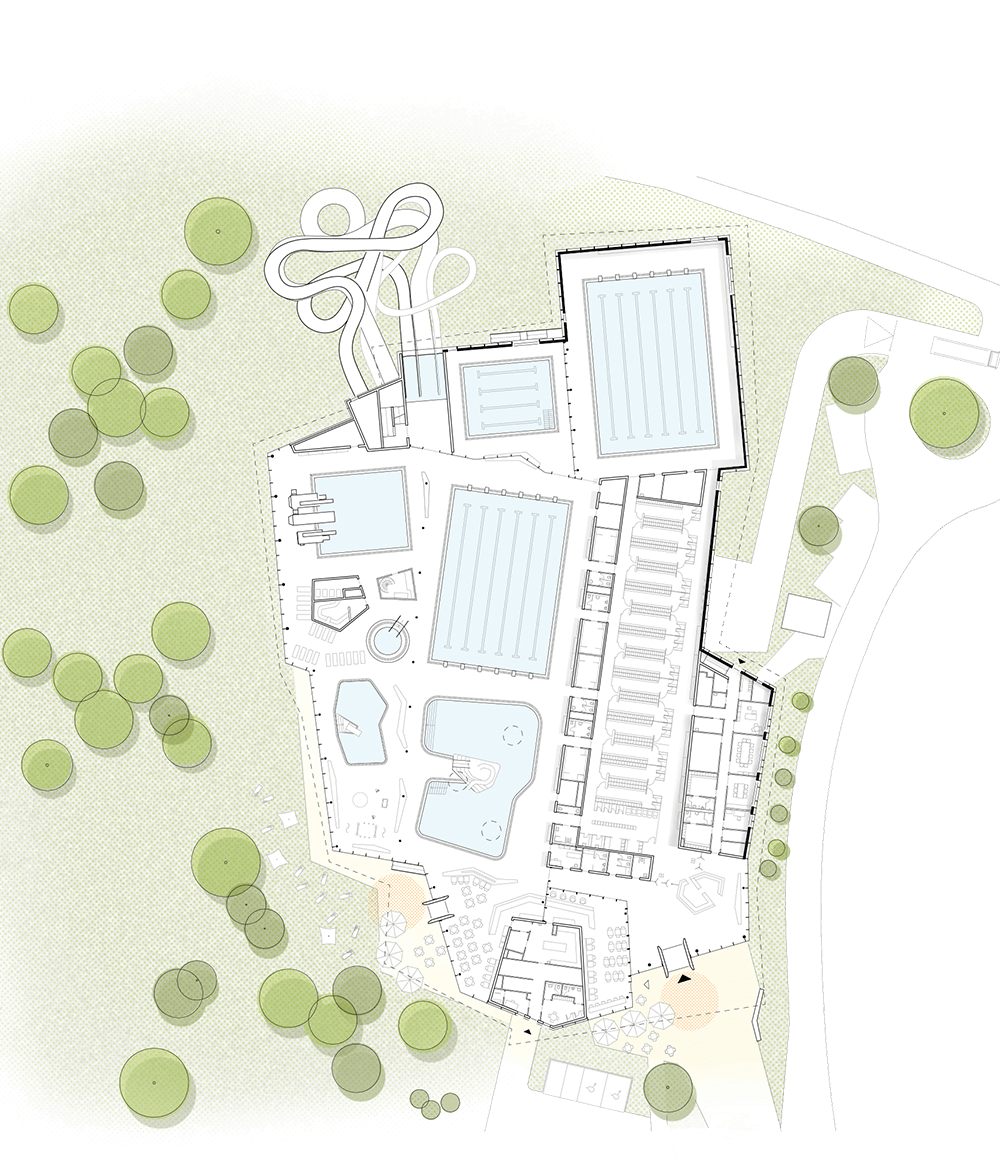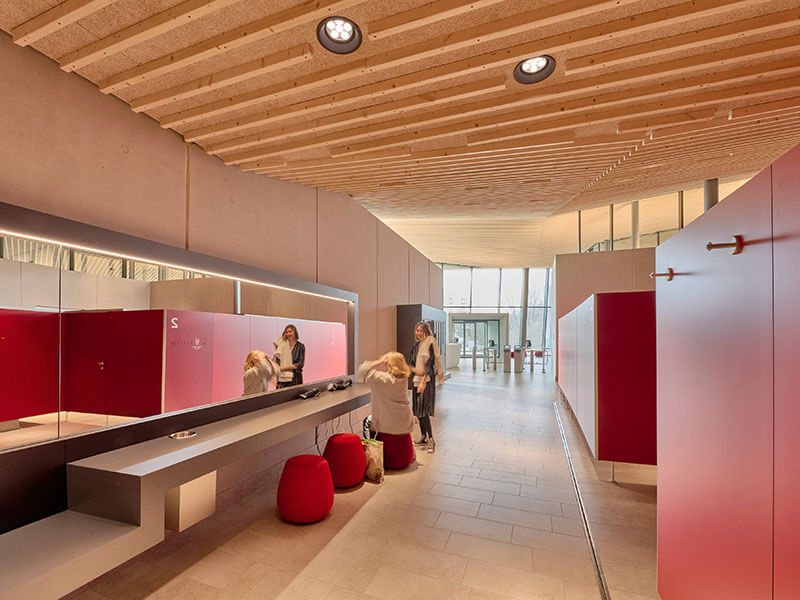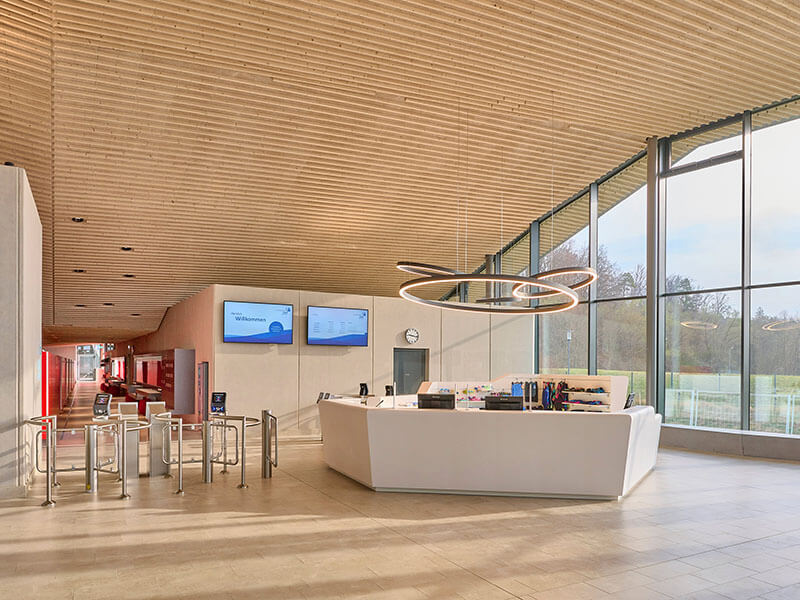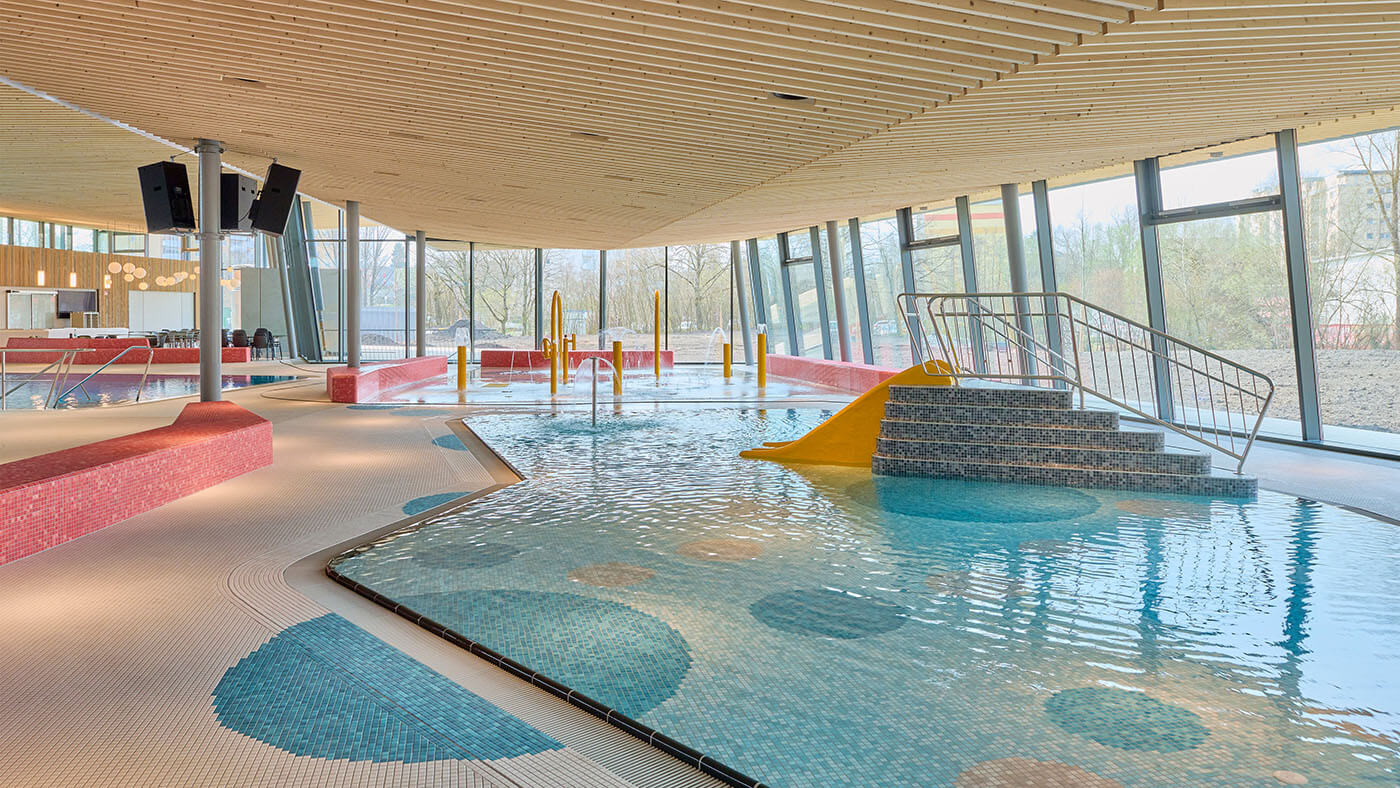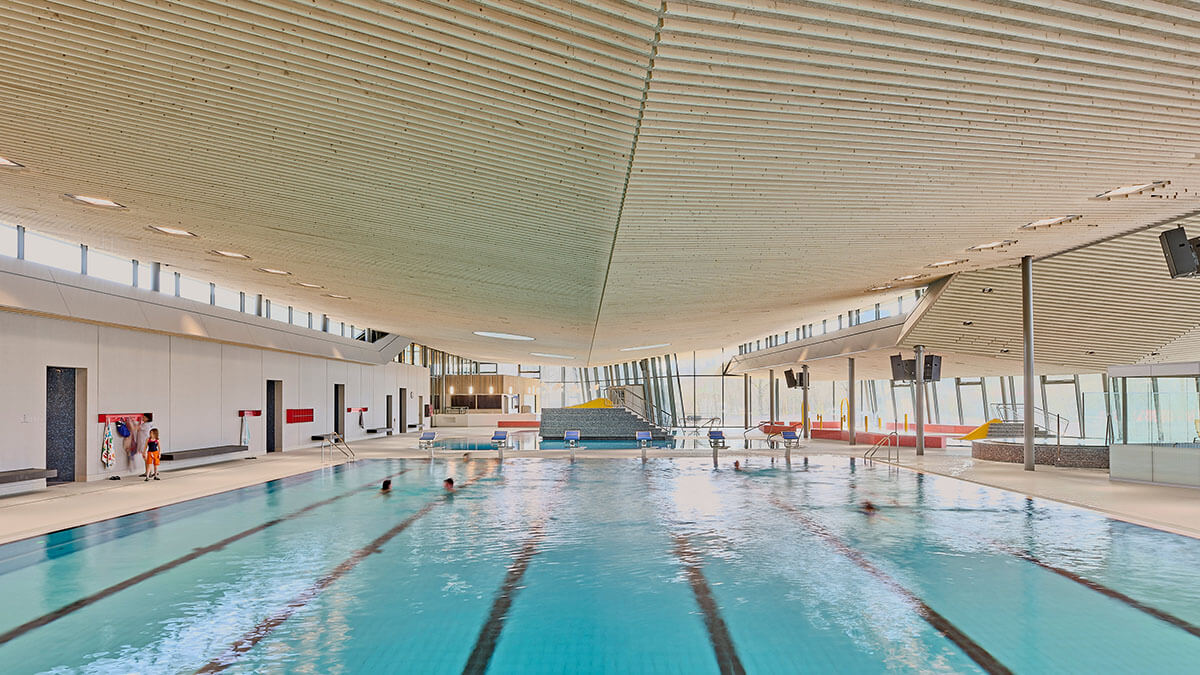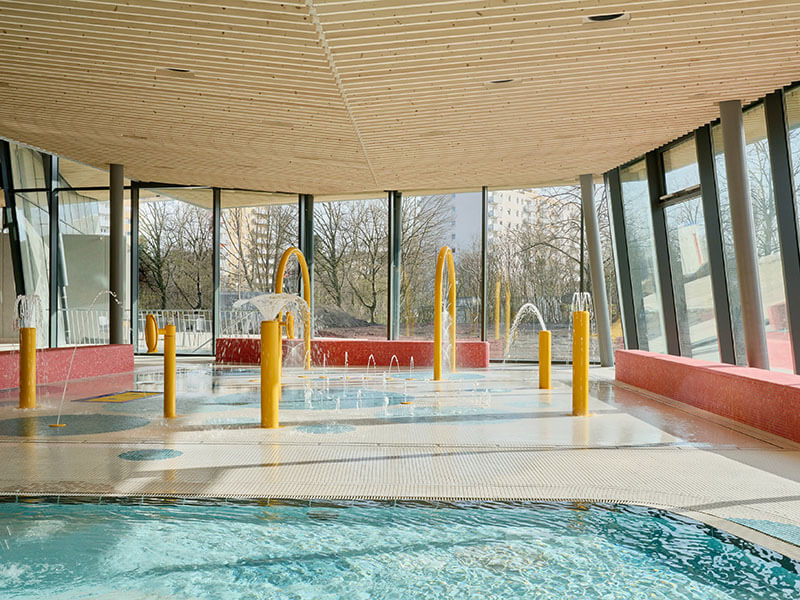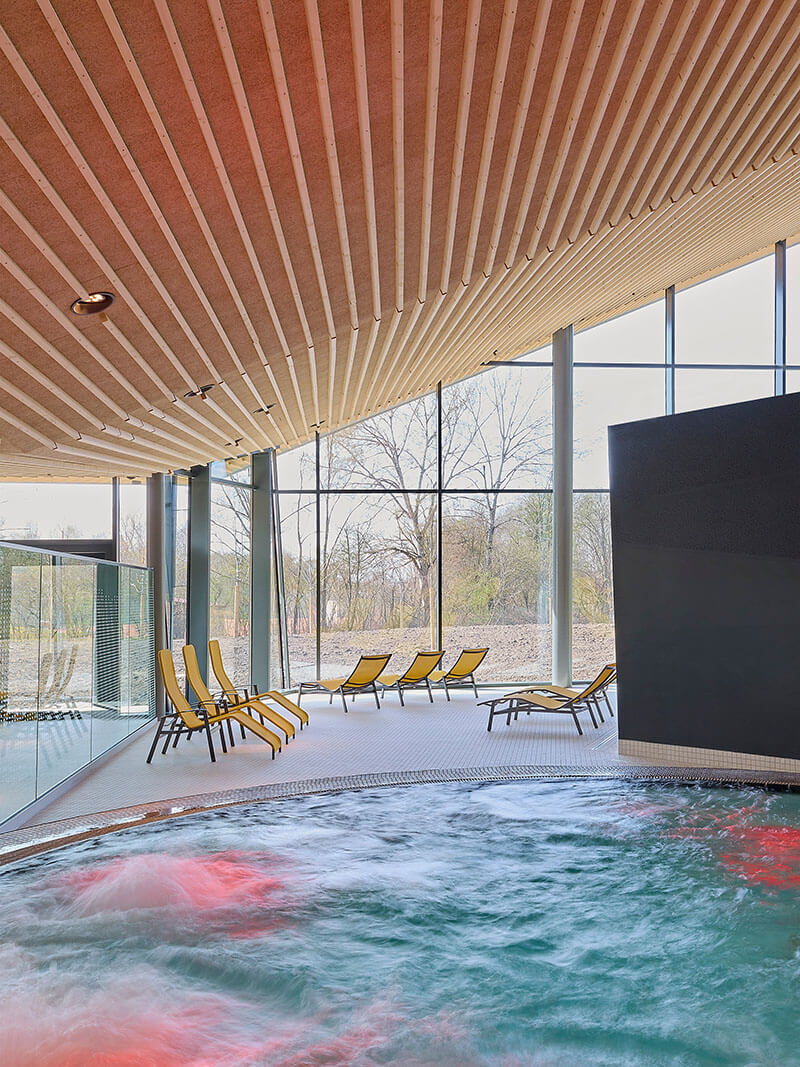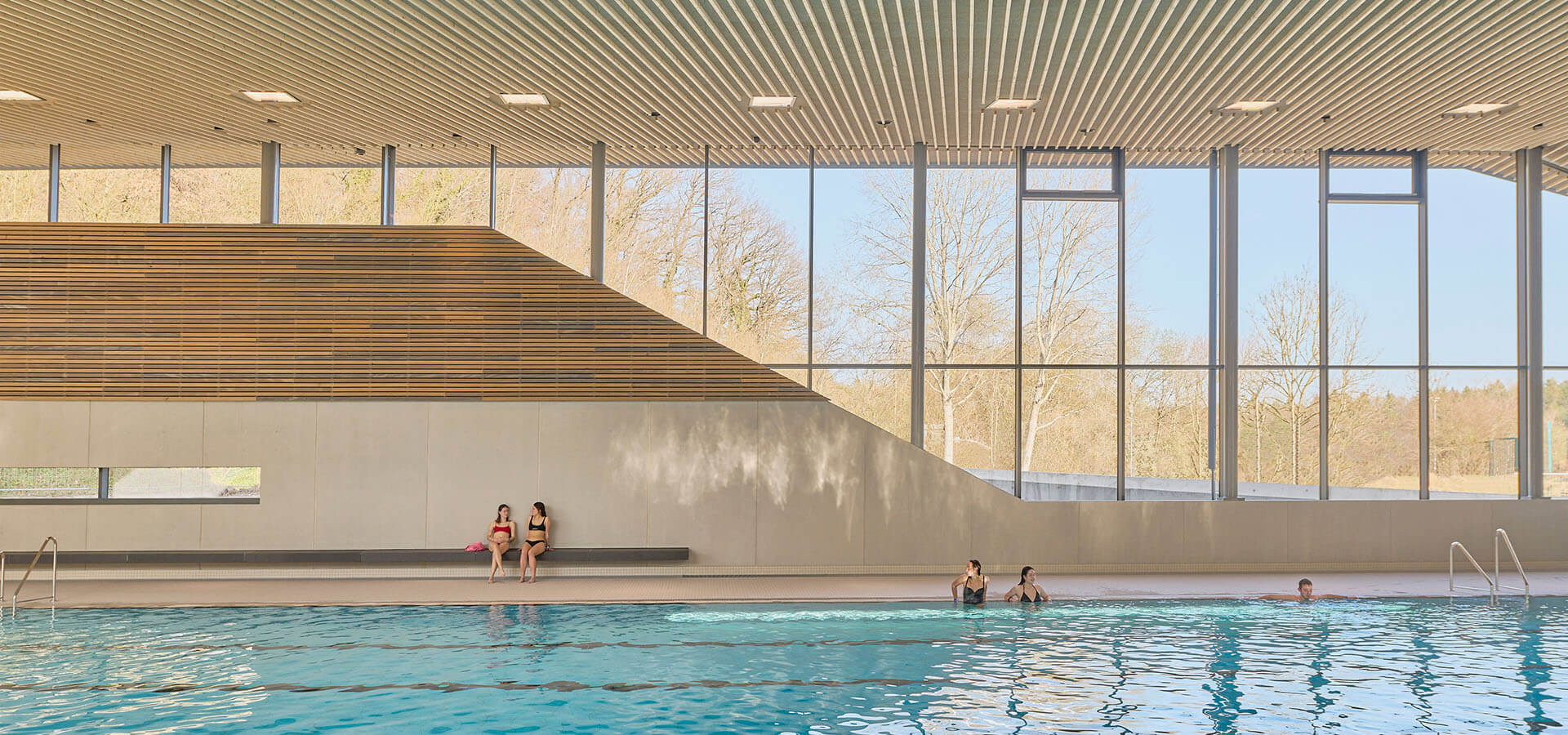Schwaketenbad in Constance
Do it with an architect!
The new Schwaketenbad impresses with open-mindedness, a variety of offers, its organisation and the choice of materials.
Attractively situated on the edge of the city, the new Schwaketenbad was constructed close to nature on the same site as the original indoor aquatic center that was destroyed in a large fire in 2015.
Schwaketenbad in Constance is the largest indoor leisure pool on Lake Constance. The facility is aimed, with equal emphasis, at all types of visitors, from families, swimming clubs, and school classes to sports enthusiasts and those just looking to relax.
Attractively situated on the edge of the city in the immediate vicinity of the local recreation areas in the forests of Schwaketen and Mainau and surrounded by numerous sports facilities, this new structure was constructed close to nature on the same site as the original indoor aquatic center that was destroyed in a large fire in 2015.
This lively aquatic landscape includes two 25-meter swimming pools, a non-swimmer’s pool with a slide, a toddler pool, a warm-water pool, a learning pool with a lifting floor, diving facilities, two giant slides, and a water playground.
The pleasantly proportioned open and quiet zones combine with this finely tuned array of water areas to create a unique atmosphere. The ceiling heights vary to meet the needs of the different areas and help generate a fascinating, three-dimensional spatial composition which offers not only a feeling of security but also a large open area that encourages visitors to interact with one another.
Architect
Behnisch Architects Stuttgart
Stefan Rappold, Alexander Seib, Elena Haibel, Andreas Greiner, Achim Buhse, Karolina Curic, Nevyana Tomeva, Andrew Friedenberg, Hie Gown Ohh, Andreas Peyker
Client & Operator
Bädergesellschaft Konstanz mbH
The arrangement of all the pools has been custom-tailored to suit the site’s unique location.
A harmonious arrangement of three roofs lends the building a sculptural flavor with an underlying sense of invitation, and its distinctive appearance offers a hearty welcome to visitors when seen from a distance. Inside, these dynamically arranged roof surfaces mark out the various pool areas in a playful fashion without disturbing the aquatic landscape’s open nature.
This emphasis on a nuanced treatment of the requisite ceiling heights lends each of the zones its own sense of scale.
The arrangement of all the pools has been custom-tailored to suit the site’s unique location. In the center, we find a pool that invites swimmers to “get in a few laps.” The adjacent non-swimmer and toddler pools as well as the water playground face toward the southern facade. Here, we also find the food court and adjoining terrace and a grassy area for sunbathing.
Next to the children’s area is the quiet zone with deck chairs, warm-water pool, steam bath, and infrared sauna. Located behind this area is a separate protected area for the diving facilities with 1‑, 3‑, and 5‑meter diving platforms. Other attractions include the two waterslides—100 and 123 meters in length—on the northern side of the building.
Next to, and acoustically separated from, the slides, we find the learning pool in which lessons are held and the adjacent 25-meter pool for the swimming clubs.
Guests find it easy to navigate this single-story swimming area located at ground level. Lightweight glass dividing walls delineate the quiet area, screen the slides’ landing area, and offer a high level of privacy for the learning pool and the second 25-meter swimmers’ pool.
The Indoor pool facility is notable not only for its sculptural roof design but also for the generous glass facades, which enclose the structure like a lightweight, transparent curtain. The facades thus provide an unimpeded view of the surrounding greenery and impressive stock of trees.
The architects’ goal was to come up with the most sustainable design possible for the building and power supply.
The deliberate use of natural materials—in the connecting wooden roof with its delicate, untreated squared spruce timbers or the near-natural beige of the floor of the baths, for example—creates a connection to the landscape of the adjacent Schwakaten and Mainau forests.
Color accents are provided, for example, by the red heated benches, which articulate the space and the shiny blue mosaic tiles. The varying roof heights create bands of light that generate a particular atmospheric effect as the sun angles in.
The architects’ goal was to come up with the most sustainable design possible for the building and power supply. Almost the entire roof landscape is thus covered in photovoltaic modules supplied by the Stadtwerke Konstanz company. Most of the building’s heating is derived from combined heat and power modules and from waste heat produced by the pools and wastewater from the showers. This allows the indoor swimming pool to save around 171 tons in CO2 emissions each year.
The open character and sophisticated, well-nigh inexhaustible diversity of the new Schwaketenbad make it a particularly impressive venue in which all types of user groups are encouraged to interact with one another. The striking spatial atmosphere is a key part of providing bathers with a memorable experience.
Fotos
David Matthiessen
Text
Johannes Bühlbecker
More Sports Media

